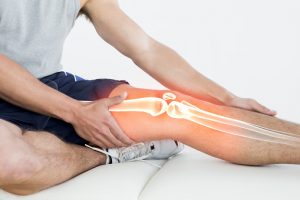
Most likely, your answer was osteoporosis or osteoarthritis—which is expected, given the high prevalence rates of these conditions and the awareness efforts by various health organizations aimed at prevention and management. After a certain age, your doctor may suggest you go for a bone mineral density test to check the strength of your bones and prevent extensive bone loss through supplements and lifestyle interventions. Osteoarthritis, the wear-and-tear of the joints, is usually manifested through hard-to-miss symptoms such as pain and swelling.
But there are other bone conditions that are less common than these two and are considered “silent diseases,” as they are often diagnosed by accident during a routine examination or a screening for another condition. Although some of them cannot be prevented, it’s important to be aware that such diseases exist.
5 less common bone diseases
Osteomalacia: This is the softening of the bones usually brought about by a vitamin D deficiency. Often symptomless during the early stages, it takes a very long time to develop. In the later stages, it often manifests itself through bone pain in the lower back, hips, and legs. People with limited exposure to sunlight, Celiac disease, and those suffering from liver or kidney problems (organs involved in vitamin D processing) face a higher risk of developing osteomalacia. What sets this condition apart is the fact that it’s not the problem of a defective bone; it’s the lack of a vitamin or the inability to adequately process said vitamin. To ensure you’re not deficient, get out in the sun more often (don’t forget to do it safely, though) and eat foods fortified with vitamin D, such as orange juice and cereals.
Stress fractures: Caused by repetitive stress, this type of fracture affects the shins in the majority of cases. An example of such stress is prolonged jumping or long-distance running. People new to endurance sports or military training are frequent victims of stress fractures, although even professional athletes are not immune to such injuries. Even a healthy bone cannot resist the inflicted stress. If you’re just starting to exercise—or if you’re advancing to the next level—make sure you’re increasing your load and intensity very gradually, taking breaks after each session and whenever necessary. (Get up from a chair without struggling.)
Osteonecrosis: Usually taking place in the thigh bone near the hip, this condition develops due to restricted blood flow to the bone—eventually killing it—as the name “dead bone” implies. A history of fractures, alcohol abuse, steroids, and the diagnosis of sickle cell anemia are all risk factors for this condition. The problem is, you can’t really prevent it and can’t tell you have it until you’re in pain. In the cases of severe damage, a surgery or joint replacement is required.
Paget’s disease of bone: This is a chronic disorder that disturbs the bone metabolism process in which new bone tissue replaces the old. As a result, the bone cannot properly heal itself, weakens, and becomes prone to other problems depending on its type and location. For example, the deformation caused by Paget’s disease in the skull could affect one’s hearing quality or make the teeth loose. The root cause of the disorder is still unknown and no symptoms are presented—it is usually detected during a routine examination for another condition. Older adults of European descent are at a higher risk for the disease.
Osteogenesis imperfecta: Also known as brittle bone disease, this is a genetic disorder characterized by an extreme brittleness of the bones, which are very easily fractured as a result. People who survive into adulthood face a slew of other health complications for the rest of their lives, notably osteoporosis, chronic joint pain, and breathing problems. As it is an inherited condition, you can’t prevent it and there is no cure for it yet. Treatment aims to manage the symptoms, improve mobility, and help maintain bone mass.
Bone health is something that should be taken care of early on to ensure your independence and well-being in old age. Going for regular screenings, devising a sound bone support plan with your doctor, and listening to your body will help you stay strong and protect your bones.
Related: Specific exercises to promote bone health and combat osteoporosis